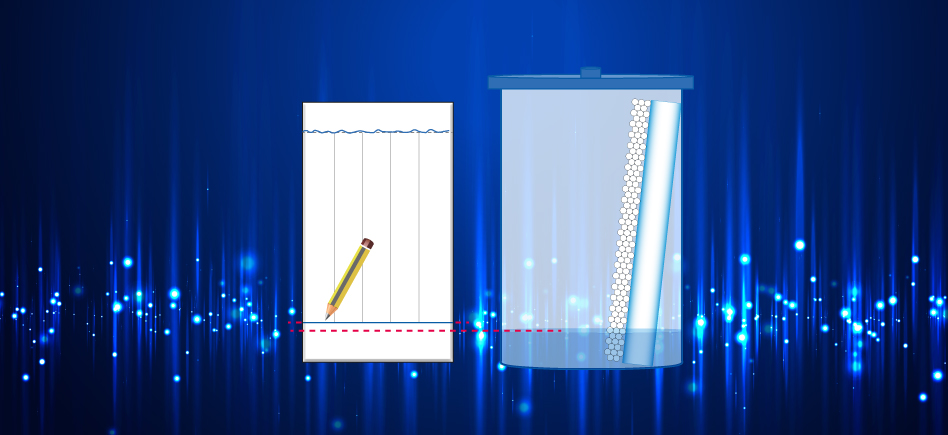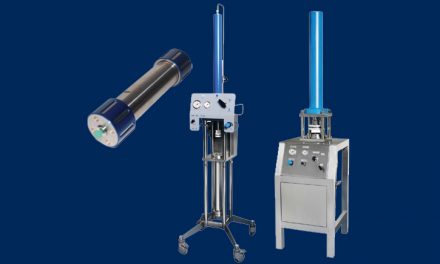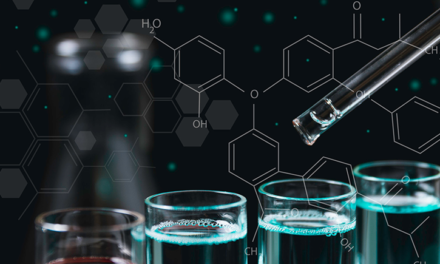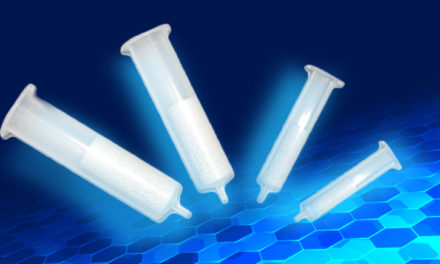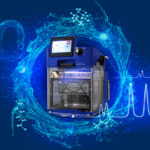1. Deposit line & Solvent front
Plot the deposit line with a pencil at 3mm above the mobile phase level.
Recommended migration height is at least 8cm.
Make the solvent front migrate at up to 1cm from the top edge of the TLC plate.
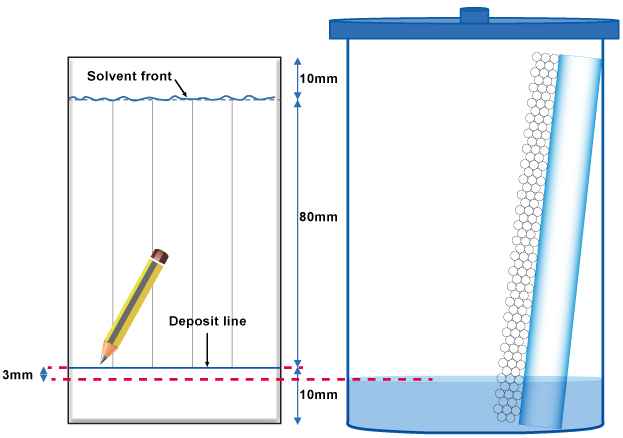
2. How to make the deposit
a) Sample concentrationit is necessary to avoid over-loading |
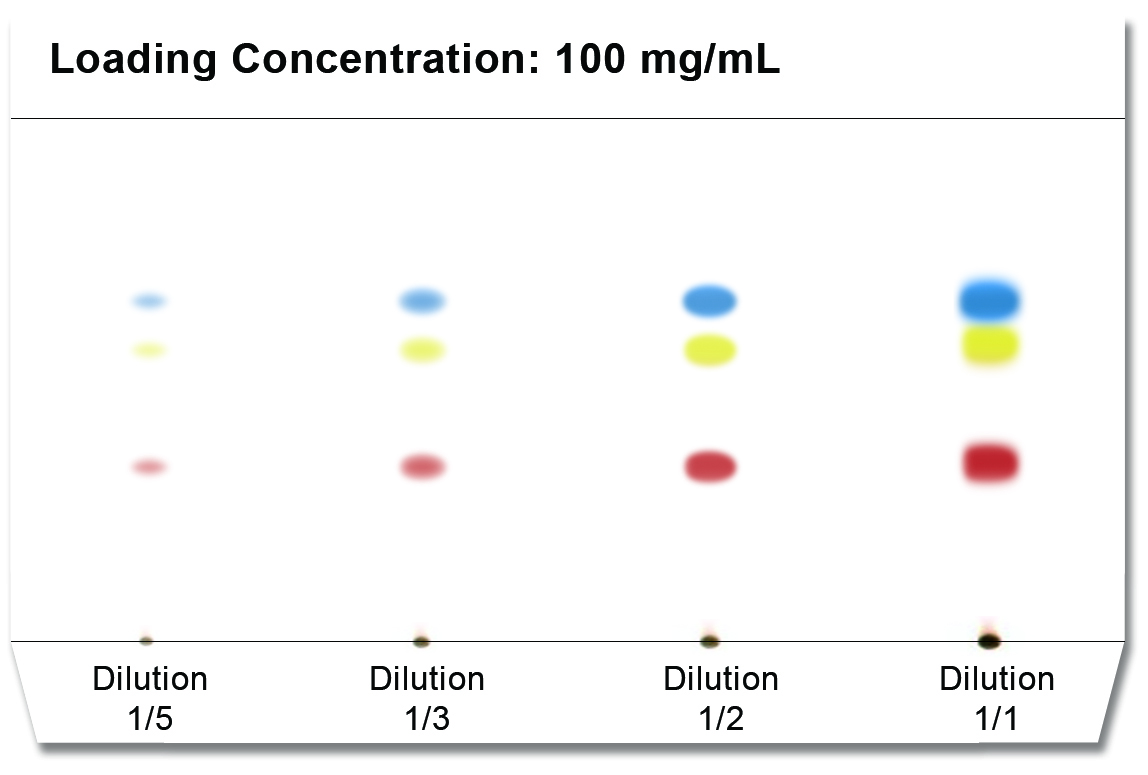 |
b) Deposit size
The deposit must be spreaded at the minimum possible (smallest possible volume) otherwise there is a loss of separation.
If the chemist wants to make several deposits, it is necessary to dry the plate between the successive deposits. The plate must be left to dry for 10min at room temperature before its development.
Influence of the size of the deposit on the separation – Dimensions of the spots according to their Rf.
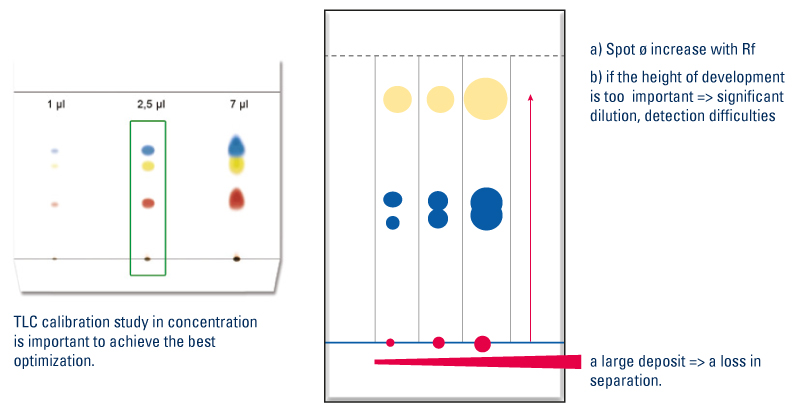
3. Deposit of the raw sample
a) Spot mode:By capillarity using an HPLC syringe or a capillary, there is a more or less deep penetration of the solute in the adsorbent layer. The finest deposit spots are obtained with a syringe rather than a capillary. |
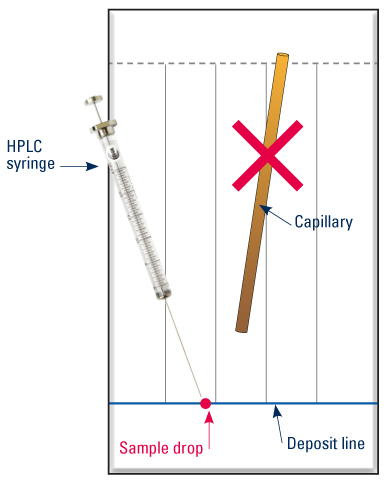 |
b) Spray mode:By using a spray bottle, the spray speed must be slower than the evaporation velocity to avoid any projection. |
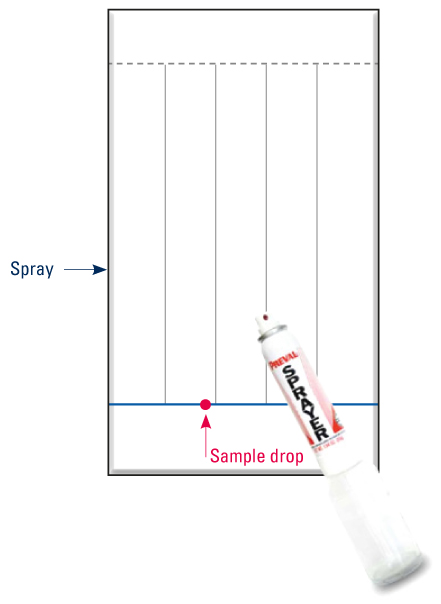 |
Solvent of dilution
It must have a weak elution force, be very pure.
It must be sufficiently polar to dissolve the sample (but not too much to be easily eliminated).
The use of bases and acids should be limited.
Avoid viscous and high-boiling solvents (N,N-Dimethylformamide, DMSO, BuOH, water), as the migration time of the solvent will be longer.
It is necessary to dry the plate between two successive deposits.
Solvent of elution
Adapt the elution strength according to the compounds polarity to keep Rf in the optimal zone (0.15 – 0.35).
The mobile phase velocity is not constant over the entire length of the plate.
Use the same mobile phase for TLC & Flash purification.
Preparation of the mobile phase to ensure a perfect transfer to Flash purification =>
Solvents must be measured precisely in volume using separated flask (check the precision of the flask).
Low volume in % can be measured using syringe to ensure greater precision.
Know more:
- Contact us: interfine@interchim.com
- Visit our website: www.interchim.com
- Discover all our purification systems
- Revolutionize your TLC using our App “TLC to Flash & Prep Chromatography”

